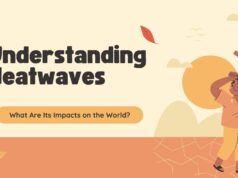Wildfires have become a recurring and destructive force in California, and Los Angeles is no exception. The region’s dry climate, coupled with hot temperatures and Santa Ana winds, creates a perfect storm for the ignition and spread of wildfires. In this blog, we will dive into the facts, figures, and devastation caused by Los Angeles wildfires, and what can be done to mitigate the damage in the future.
What is a Wildfire?
A wildfire, often called a bushfire or forest fire, is an uncontrolled fire that spreads rapidly due to dry vegetation, strong winds, and high temperatures. In Los Angeles, wildfires typically occur during the hot summer months, but with climate change, fire seasons are becoming longer and more intense.
The Devastation of Los Angeles Wildfires
Los Angeles has faced several devastating wildfires over the years. These fires cause massive destruction to both the environment and the local economy, as well as loss of life.
Historical Wildfire Events in Los Angeles
Wild Fire (2025)
In January 2025, Los Angeles faced a devastating wildfire that rapidly spread across the region, fueled by dry conditions and high winds. The fire burned through thousands of acres of land, threatening homes, wildlife habitats, and critical infrastructure. Thousands of residents were forced to evacuate as fire crews worked tirelessly to contain the blaze. Despite early warnings and firefighting efforts, the fire caused significant damage, with multiple structures destroyed and the smoke affecting air quality throughout the city. The event has once again highlighted the growing intensity of wildfire seasons in California and the urgent need for comprehensive wildfire prevention and climate action strategies.
The Woolsey Fire (2018)
One of the most significant wildfires in Los Angeles history, the Woolsey Fire, started on November 8, 2018. It ravaged the Santa Monica Mountains and Malibu, burning over 96,000 acres of land. The fire destroyed 1,500 structures, including homes, and forced more than 295,000 people to evacuate. It also claimed three lives and caused over $6 billion in damages.
The Thomas Fire (2017)
The Thomas Fire is considered one of the largest wildfires in California’s history. Spanning more than 280,000 acres, the fire caused widespread devastation in Ventura County and Los Angeles. The fire forced thousands of residents to evacuate, and the cost of property damage exceeded $2.2 billion.
The Station Fire (2009)
Burning over 160,000 acres of land in the Angeles National Forest, the Station Fire was one of the largest wildfires in Los Angeles County. It took the lives of two firefighters and resulted in the destruction of hundreds of homes and structures.
The Cost of Wildfires: Facts and Figures
The toll of wildfires on Los Angeles, California, and the U.S. economy is staggering. According to a report by the Insurance Information Institute (III), the economic cost of wildfires in California reached an all-time high of $11.3 billion in 2020 alone. In addition to property damage, there are extensive costs related to firefighting efforts, recovery, and lost productivity.
Key Facts:
- Annual Fire Season: Wildfire season in California typically lasts from May to November, but with climate change, it can extend into the winter months.
- Acres Burned: Over 4.1 million acres of land were scorched in California during the 2020 fire season alone.
- Destruction: California wildfires in 2020 destroyed over 10,000 structures and displaced tens of thousands of residents.
- Lives Lost: In recent years, over 100 people have died due to wildfires across the state.
The Environmental Impact of Wildfires
Wildfires in Los Angeles not only cause devastating destruction but also significantly impact the environment:
- Air Quality: Smoke from wildfires can travel across vast distances, reducing air quality and contributing to respiratory problems. In fact, the air quality in Southern California often reaches hazardous levels during wildfire season.
- Wildlife: Wildfires destroy habitats for countless species of wildlife. The endangered species of Los Angeles, such as the California condor and the San Bernardino kangaroo rat, are particularly at risk.
- Soil Erosion and Flooding: After a fire, vegetation is lost, which can lead to soil erosion and flooding. This makes the landscape more vulnerable to landslides during heavy rainfall.
Why Are Wildfires So Frequent in Los Angeles?
Several factors contribute to the frequency and intensity of wildfires in Los Angeles:
- Climate: The Mediterranean climate in Los Angeles, with hot, dry summers and mild, wet winters, creates perfect conditions for wildfires.
- Santa Ana Winds: These strong, dry winds that occur in the fall can spread fires rapidly across vast areas.
- Drought Conditions: Extended periods of drought, exacerbated by climate change, lead to extremely dry vegetation, which becomes highly flammable.
- Urban-Wildland Interface: Los Angeles has many neighborhoods located near forests and brushlands, making homes and infrastructure more vulnerable to fires.
What Can Be Done to Prevent and Mitigate Wildfires?
While wildfires may be a natural part of California’s landscape, the increasing frequency and severity of these fires call for immediate action. Here are some of the strategies to help prevent and mitigate wildfires:
- Fire-Resistant Landscaping: Homeowners can create defensible space around their properties by using fire-resistant plants and clearing dead vegetation.
- Improved Forest Management: Controlled burns and thinning out dead or overgrown trees can help prevent larger, uncontrollable fires.
- Technological Advances: Drones, satellite technology, and early warning systems can help detect fires early and provide critical information to first responders.
- Stronger Building Codes: Implementing stricter building codes that require fire-resistant materials can help reduce damage to homes and buildings.
- Public Awareness: Educating residents and visitors on fire safety practices, including how to create defensible spaces and follow evacuation protocols, is crucial.
What’s Next for Los Angeles Wildfires?
The future of wildfire management in Los Angeles will require a combination of better preparedness, climate change mitigation, and innovative technologies. With wildfires becoming more frequent and destructive, the state must focus on resilience and recovery, while also working toward reducing the impact of climate change. Local, state, and federal agencies must collaborate to implement better firefighting strategies and invest in sustainable practices to protect both the people and the environment.
Conclusion
The wildfires in Los Angeles have left a lasting legacy of destruction, but through continued education, improved strategies, and climate action, we can reduce the frequency and severity of these fires. As Californians continue to face the threat of wildfires, it’s essential to stay informed and prepared, ensuring that future generations can live in a safer, more resilient environment.
Share this post to spread awareness on the importance of wildfire prevention, and don’t forget to subscribe for more insights on fire safety, environmental issues, and sustainable practices.















